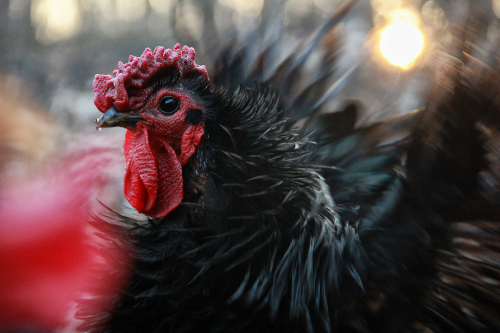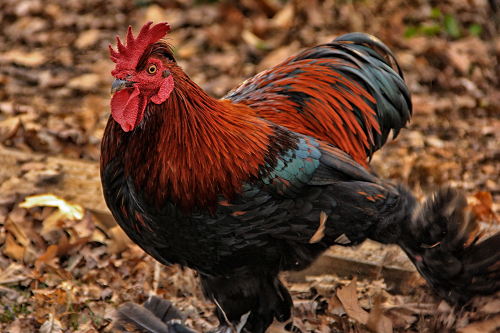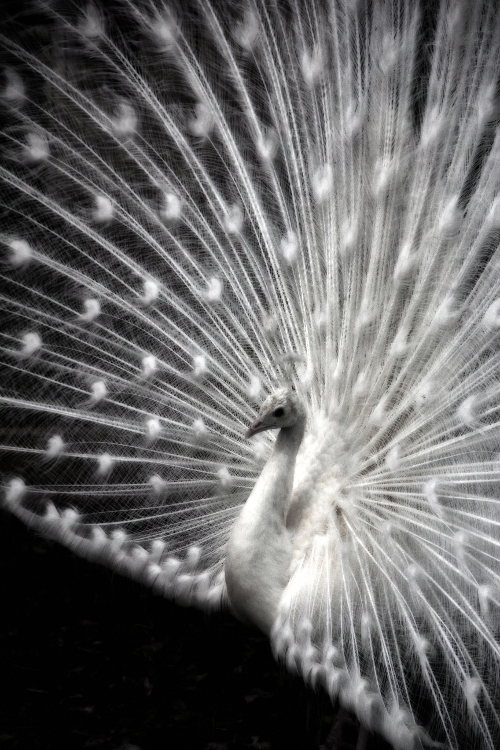The Extreme Frizzle: Too Much of a Good Thing
I am a blogger for Backyard Poultry Magazine and this is an article of mine that they posted on March 26, 2014
Drawing attention to ethical breeding practices is something that I am quite passionate about. There are many interesting and beautiful mutations that can occur in poultry. One of the most popular mutations is the Frizzle, but breeding a healthy good quality frizzle can be tricky. My very first companion hen was a little red frizzle cochin. Between the dramatic frizzling of her feathers and her vivacious personal
ity, she gave the impression of being carbonated, so we named her Fizzy. That was many years ago and she has long since passed, but because of my special relationship with her, I have always had a particular fondness for frizzled birds. Most poultry fanciers enjoy them. Many of them have a least one of the fluff balls running with their flock. But it is not a well understood mutation among casual breeders, so I wanted to shed some light on the subject.
 To start off, Frizzle is not a breed. It is a feather mutation caused by an a-Keratin (KRT75) mutation that causes the characteristic curled rachis and barbs of the feathers (insert image). Any breed can have occurrences of frizzling and it can range from a slight lift to the feathers, to the ideal broad feathers that curl toward the head. They essentially look like they walked through a windstorm backwards wearing too much mousse.
To start off, Frizzle is not a breed. It is a feather mutation caused by an a-Keratin (KRT75) mutation that causes the characteristic curled rachis and barbs of the feathers (insert image). Any breed can have occurrences of frizzling and it can range from a slight lift to the feathers, to the ideal broad feathers that curl toward the head. They essentially look like they walked through a windstorm backwards wearing too much mousse.
Frizzles in general don’t require much special care. They are usually as hearty as their smooth feathered counterparts of the same breed, with the exception of a need for lower perches or a safe ground-level roosting spot. Because of their curled wing feathers, they are flightless or at the very least unskilled fliers. I can remember a little round butterball of a frizzle cochin that I had a few years back named Maizee. We used to say she “flew like a rock”. Flap as she might, she just didn’t have any lift. She did however adapt an impressive vertical leap and could take a sandwich out of your hand at waist height. But I digress… The only other consideration with frizzles is in cold climates. They are not as able to keep themselves warm because their frizzling cuts down on the insulation characteristics of their feathers. Neither of those qualities are enough of a drawback to deter most poultry fanciers though.
Because the frizzle gene is not well understood, many casual breeders make one fatal mistake when pairing birds to try to achieve offspring that display the frizzle characteristic. They breed frizzle to frizzle to increase the chances of frizzle offspring. And sure, you will get frizzled birds with that type of pairing, however, the unfortunate byproduct is called an extreme frizzle. They are known by many names including curlies, wireys, pipe-cleaners and frazzles to name a few. They have very thin brittle feathers that break easily during mating or even normal grooming and they are prone to other genetic weaknesses that further increase their delicateness. Extreme frizzles require significantly more attention to have a good quality of life than typical frizzles. Where we live in Pennsylvania, we have never been able to keep an extreme frizzle outside all year long. In the summer, they are prone to sunburns where they feathers have broken and their skin is exposed. In the winter they have little if any ability to stave off the cold.
Causal breeders often breed a few of these by mistake. Unethical breeders that know better breed them because they believe it increases their profit margin on frizzled birds and the extremes are discarded as collateral damage. We have rescued more than one of these unfortunate little creatures that had been left to die for lack of sufficient care or complete apathy to their unique condition.
So, what do we need to know to avoid the Curlie condition? The frizzle gene is transmitted in what is known as an incompletely dominant mode. This means that one trait (fizzle) is not completely dominant over the other trait (smooth feathers). This is important because it brings me to my next point, that not all chickens carrying the gene appear frizzled. Smooth feather frizzles have normal looking feathers and they carry a latent frizzle gene, however they are no less frizzle than a frizzle with curled feathers. In fact, one of the most important things a breeder can have in their breeding pen is a frizzle that has smooth feathers. It gives you the best chance of breeding healthy good quality frizzles and reduces or eliminates the incidence of extreme frizzles.
 To really understand what will happen in a frizzle breeding pen, let’s take a look at a punnet square. As you can see a smooth feathered frizzle (ff) bred to a frizzle feathered (Ff) bird will produce 50% frizzles and 50% smooth feathered frizzles. Breeding frizzle (Ff) to frizzle (Ff) will still only get you 50% frizzle, but you will also have 25% extreme frizzles (FF)
To really understand what will happen in a frizzle breeding pen, let’s take a look at a punnet square. As you can see a smooth feathered frizzle (ff) bred to a frizzle feathered (Ff) bird will produce 50% frizzles and 50% smooth feathered frizzles. Breeding frizzle (Ff) to frizzle (Ff) will still only get you 50% frizzle, but you will also have 25% extreme frizzles (FF)
So you can see that one F is a good thing, it will get you a normal healthy frizzle, but FF is too much of a good thing.



